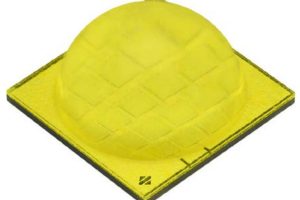
In each case, they are designed to be positioned pointing vertically downward, spaced away from the wall by one third of the height of the wall. For the light to start as close to the wall as possible, the ideal distance from the wall is 1m.
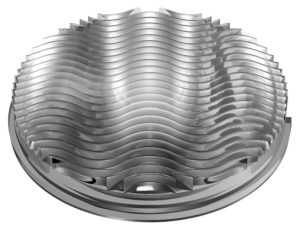
This is a flat slab in shape, only 11.4mm thick despite its diameter.
With a Citizen CLU702 led, it has a peak intensity of 1.13cd/lm and an LOR (light output ratio) of 76.9 %.
“This asymmetric wall washing lens is designed for ceiling recessed fixtures,” according to the company. “It provides a homogenous beam from the bottom to the top of most walls.”
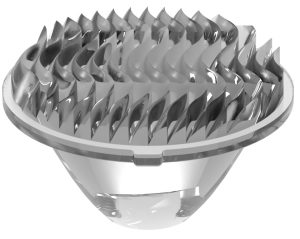
With a flat-top Cree XHP35B HI it delivers a peak intensity of 1.279cd/lm and has a LOR at the wall of 77.6%.
“This is a version without sprue and with an orientation notch,” said Gaggione. “The texture of the LLC25A is patented. It is a unique concept that allows to obtain a rectangular beam with an excellent light distribution.”
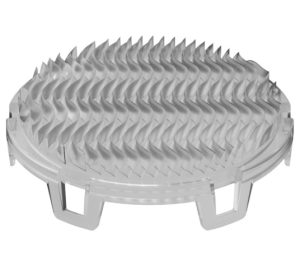
This is the optic that works with RGBW clusters, and also with mid-power and high-power leds, and CSP clusters.
With an Ostar Stage S2WN led and the narrow output LLC59N collimator, it can achieve a peak intensity of 1.026cd/lm and a LOR t the wall of 81.35%.
Four kits have been built around the LLW59A, with either the narrow LLC59N or ‘colour’ LLC59C, and with either a standard (‘SPB’) holder or the reduced pcb footprint (‘AA’) version. Holders can be clear, black or white in colour.
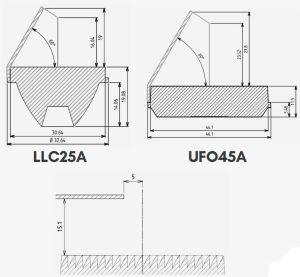
 Electronics Weekly Electronics Design & Components Tech News
Electronics Weekly Electronics Design & Components Tech News


